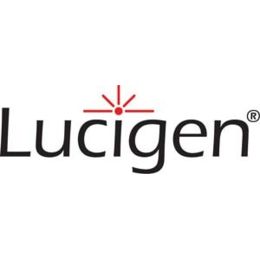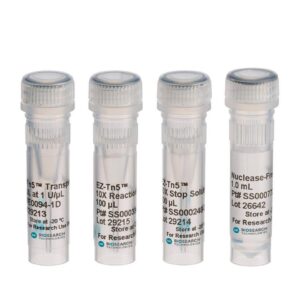
Generate random gene knockouts in non-E. coli bacteria
- Generate mutants with improved genetics or function
- Identify genes involved in pathogenesis, toxicity, biofilm development
- Unravel metabolic pathways
- Identify essential genes and regulatory elements
- Characterize novel genes and gene functions
- Insert Kan selectable marker into gDNA and rescue clones in E. coli host expressing the pir gene product
- 100’s of citations for many different applications
| Name | SKU | Size | Availability | Vendor | Price | Order | |
| EZ-Tn5™ |
TSM08KR | 10 Rxns | Generally 1-2 weeks from receipt of order | LGC Biosearch Technologies - Lucigen (Epicentre) | Log in for pricing |
- Applications
- Rescue cloning of transposon-mutagenized microbial genes (Fig. 1).
- Rescue of plasmids from non-E. coli bacteria.
Among the advantages of transposon mutagenesis is that the transposon serves as a marker that can be used to clone and sequence the region of genomic DNA that has been disrupted. Nothing makes this cloning process easier than creating mutations in vivo with the EZ-Tn5™ <R6Kγori/KAN-2>Tnp Transposome™ Kit.* In addition to encoding a broad host-range kanamycin resistance gene, the transposon contains an E. coli conditional origin of replication (R6Kγori). The presence of this origin of replication enables the propagation or “rescue” of the region of genomic DNA, or plasmid, into which the transposon has been inserted.
First, electroporate the Transposome into electrocompetent cells of the highest possible transformation efficiency. Activation of the Transposome by Mg2+ in the cell results in the random insertion of the EZ-Tn5 <R6Kγori/KAN-2> Transposon into the host’s genomic DNA. Select transposition clones on kanamycin plates or by screening for the loss of gene function.
Benefits
- Easily recover and propagate plasmids from diverse bacterial genera that will not normally replicate in E. coli.
- Simple rescue cloning process of mutagenized genes speeds up structure/function studies and sequencing.
- Random insertion of transposon DNA assures excellent coverage of entire bacterial chromosome.
- Rescue clones can be sequenced bidirectionally using the primers provided that are homologous to the ends of the transposon.


